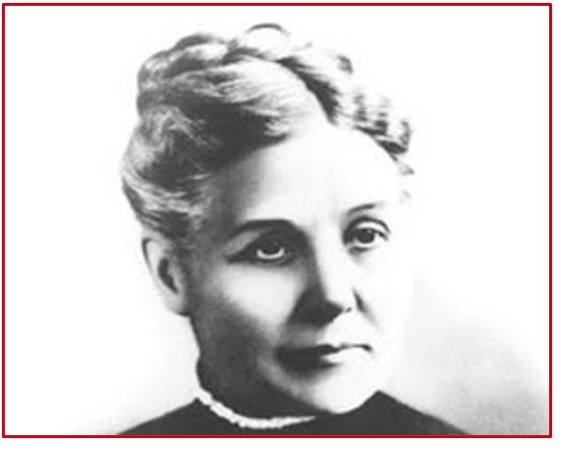
Mother’s Day in the US had several starts and contributors, but it is Anna Maria Jarvis (May 1, 1864 – November 24, 1948) who is credited as the founder of our national Mother’s Day holiday.
Anna Jarvis’ campaign for a special day to celebrate mothers began from the work by her own mother, Ann Reeves Jarvis, who had frequently expressed a desire for the establishment of such a holiday.
According to the historian Katharine Antolini, Mrs. Jarvis spent a great deal of her life mobilizing mothers to care for their children and encouraging society to recognize the work that mothers do for the family and the home. Mrs. Jarvis once stated, “I hope and pray that someone, at some time, will establish a Mother’s Day that commemorates every mother for the matchless service she renders to humanity in every field of life. She is entitled to it!”
Mrs. Jarvis was very active in the Methodist Episcopal Church, where from 1858 she ran Mother’s Day Work Clubs to combat high infant and child mortality rates, mostly due to diseases that ravaged their community in her native West Virginia.
Mrs. Jarvis had thirteen children herself but lost nine of them, including five during the American Civil War. When Mrs. Jarvis died in 1905, surrounded by her four surviving children, her daughter Anna (who never married) promised to fulfill her mother’s dream.
Since Mrs. Jarvis wanted to celebrate the work performed by mothers and to help other mothers who were poor or in need to improve their lives, Anna created a Mother’s Day mantra that stated, “For the Best Mother who Ever Lived — Your Mother.”
In 1908, three years after Mrs. Jarvis’ death, the first Mother’s Day was celebrated at the Andrews Methodist Church in Grafton, West Virginia. Soon thereafter, the popularity of the celebration spread and in 1910 Mother’s Day became a West Virginia state holiday. In 1914, it was designated a national holiday by President Woodrow Wilson.
A huge factor in the holiday’s success was its commercial appeal. Very early on vendors selling flowers, candy, treats, cards and gifts became involved with its promotion. Gradually however, Anna became very disenchanted with the commercialization of the holiday and by 1920, she was urging people not to buy flowers.
Mother’s Day was eventually dragged into the debate over a woman’s right to vote. Anti-suffragists said that a woman’s true place was in the home and that she was too busy as a wife and mother to be involved in politics. Suffrage groups countered that if a woman is good enough to be the mother of children, she is good enough to voice her opinions and vote her heart.
Ironically, one of Anna’s final acts against Mother’s Day was to go door-to-door in Philadelphia asking for signatures to back an appeal for the holiday to be rescinded. Sadly, in her old age she was admitted to a sanitarium (in those days a sanitarium was a hospital for chronic diseases including mental illness) and died of heart failure in November 1948 at the age of 84.
Fortunately, Mother’s Day has continued to honor and cherish one of the most loved individuals in each of our lives.
Happy Mother’s Day to all of our sweet mothers!
Nancy Seiverd, President, CMI Credit Mediators, Inc.

